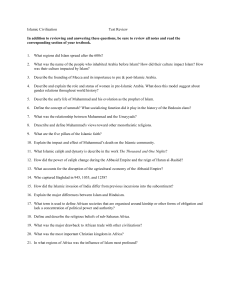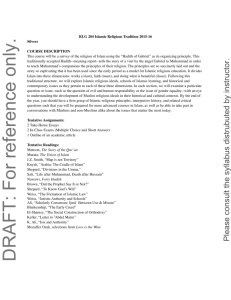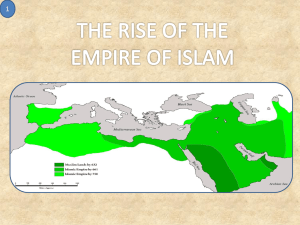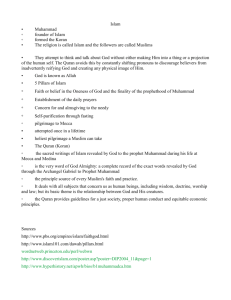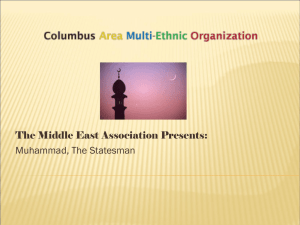What is the Hijrah
advertisement
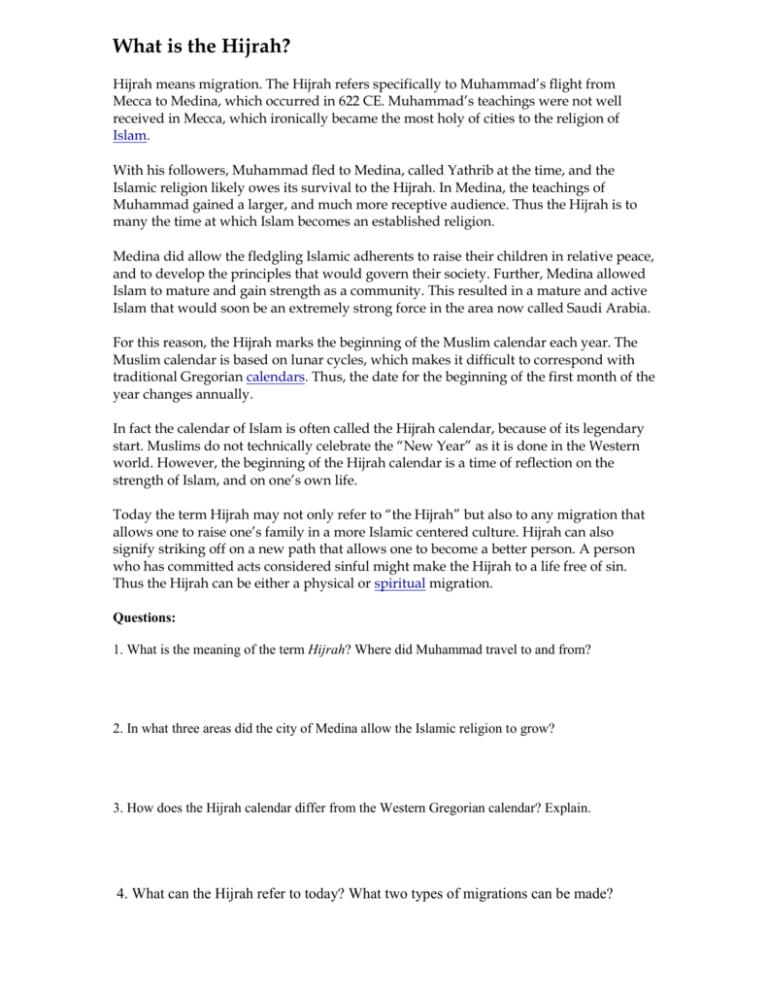
What is the Hijrah? Hijrah means migration. The Hijrah refers specifically to Muhammad’s flight from Mecca to Medina, which occurred in 622 CE. Muhammad’s teachings were not well received in Mecca, which ironically became the most holy of cities to the religion of Islam. With his followers, Muhammad fled to Medina, called Yathrib at the time, and the Islamic religion likely owes its survival to the Hijrah. In Medina, the teachings of Muhammad gained a larger, and much more receptive audience. Thus the Hijrah is to many the time at which Islam becomes an established religion. Medina did allow the fledgling Islamic adherents to raise their children in relative peace, and to develop the principles that would govern their society. Further, Medina allowed Islam to mature and gain strength as a community. This resulted in a mature and active Islam that would soon be an extremely strong force in the area now called Saudi Arabia. For this reason, the Hijrah marks the beginning of the Muslim calendar each year. The Muslim calendar is based on lunar cycles, which makes it difficult to correspond with traditional Gregorian calendars. Thus, the date for the beginning of the first month of the year changes annually. In fact the calendar of Islam is often called the Hijrah calendar, because of its legendary start. Muslims do not technically celebrate the “New Year” as it is done in the Western world. However, the beginning of the Hijrah calendar is a time of reflection on the strength of Islam, and on one’s own life. Today the term Hijrah may not only refer to “the Hijrah” but also to any migration that allows one to raise one’s family in a more Islamic centered culture. Hijrah can also signify striking off on a new path that allows one to become a better person. A person who has committed acts considered sinful might make the Hijrah to a life free of sin. Thus the Hijrah can be either a physical or spiritual migration. Questions: 1. What is the meaning of the term Hijrah? Where did Muhammad travel to and from? 2. In what three areas did the city of Medina allow the Islamic religion to grow? 3. How does the Hijrah calendar differ from the Western Gregorian calendar? Explain. 4. What can the Hijrah refer to today? What two types of migrations can be made?

